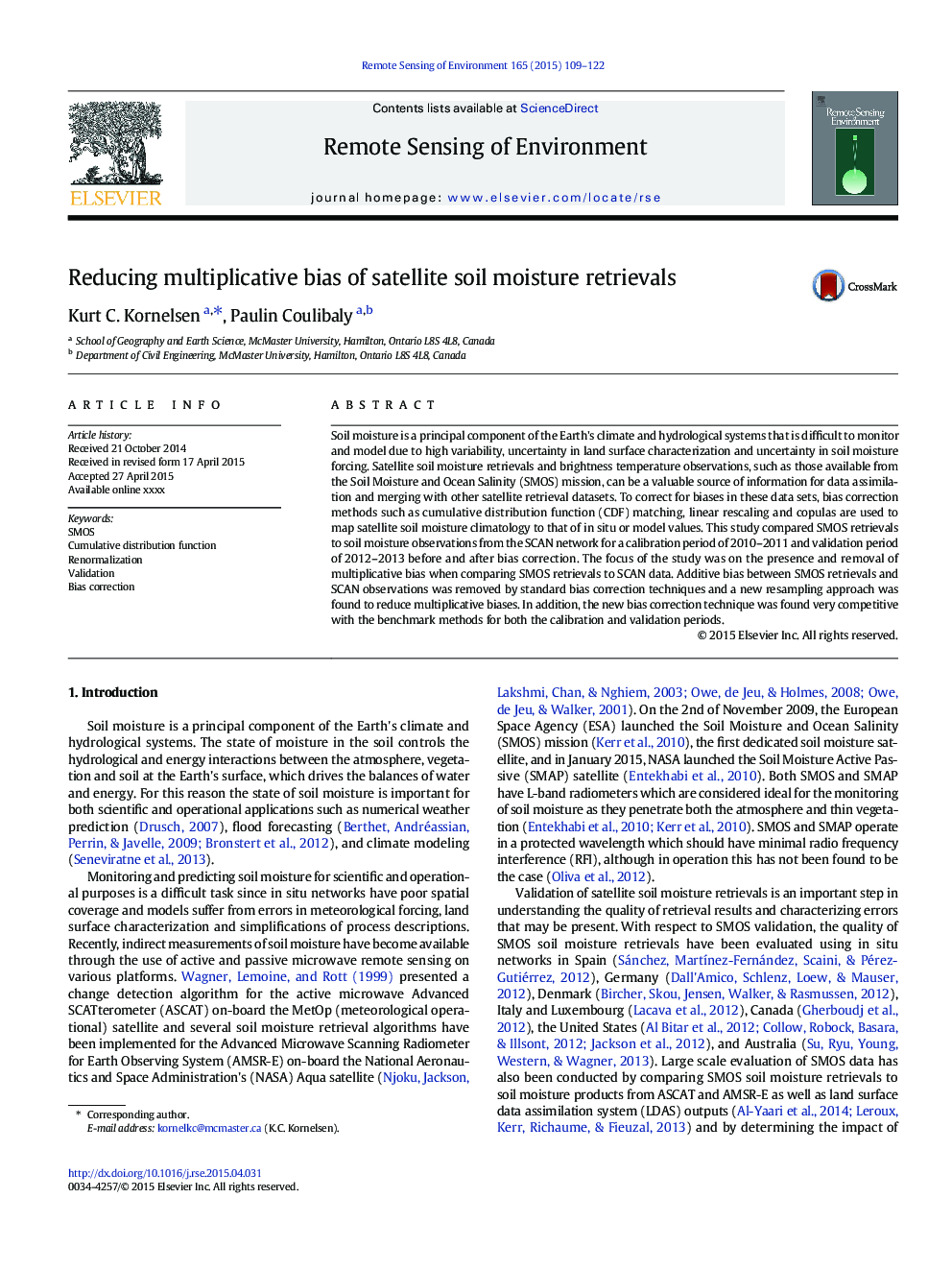| Article ID | Journal | Published Year | Pages | File Type |
|---|---|---|---|---|
| 6346066 | Remote Sensing of Environment | 2015 | 14 Pages |
Abstract
Soil moisture is a principal component of the Earth's climate and hydrological systems that is difficult to monitor and model due to high variability, uncertainty in land surface characterization and uncertainty in soil moisture forcing. Satellite soil moisture retrievals and brightness temperature observations, such as those available from the Soil Moisture and Ocean Salinity (SMOS) mission, can be a valuable source of information for data assimilation and merging with other satellite retrieval datasets. To correct for biases in these data sets, bias correction methods such as cumulative distribution function (CDF) matching, linear rescaling and copulas are used to map satellite soil moisture climatology to that of in situ or model values. This study compared SMOS retrievals to soil moisture observations from the SCAN network for a calibration period of 2010-2011 and validation period of 2012-2013 before and after bias correction. The focus of the study was on the presence and removal of multiplicative bias when comparing SMOS retrievals to SCAN data. Additive bias between SMOS retrievals and SCAN observations was removed by standard bias correction techniques and a new resampling approach was found to reduce multiplicative biases. In addition, the new bias correction technique was found very competitive with the benchmark methods for both the calibration and validation periods.
Related Topics
Physical Sciences and Engineering
Earth and Planetary Sciences
Computers in Earth Sciences
Authors
Kurt C. Kornelsen, Paulin Coulibaly,
